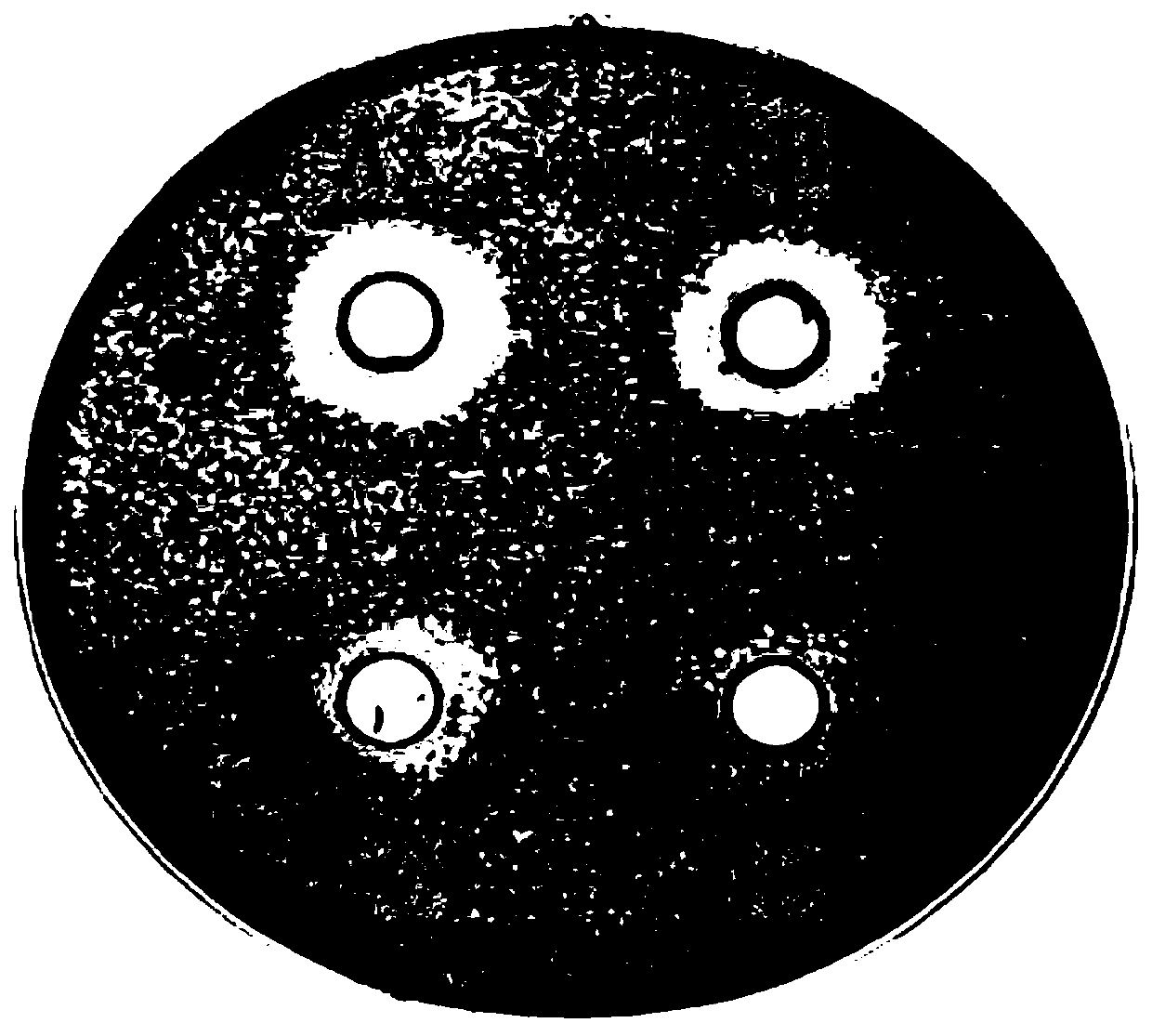A strain of Lactobacillus salivarius and its application
A technology of Lactobacillus salivarius and lactic acid bacteria, applied in the field of microorganisms, can solve the problems of incomplete restoration of tooth status, achieve the effect of preventing dental caries, important application value, and inhibiting streptococci
- Summary
- Abstract
- Description
- Claims
- Application Information
AI Technical Summary
Problems solved by technology
Method used
Image
Examples
Embodiment 1
[0067] Embodiment 1, isolation and identification of Lactobacillus salivarius
[0068] 1. Separation
[0069] The saliva of three preschool children (all volunteers who gave informed consent to the test content) was taken, and evenly spread on the MRS solid plate, and then placed in a carbon dioxide incubator for static culture at 37°C. After culturing until the 2nd day, a single colony was produced. Pick a single colony and repeat purification more than three times. The three strains of bacteria isolated were named Bacteria LJ, Bacteria A and Bacteria B, respectively.
[0070] 2. Identification
[0071] 1. Morphological identification
[0072] The bacteria (bacteria LJ, bacteria A or bacteria B) isolated in step 1 were inoculated on the MRS solid plate, then placed in a carbon dioxide incubator, cultured at 37°C, and the morphology of a single colony was observed after 2 days.
[0073] Bacteria LJ, Bacteria A, and Bacteria B were identified as Gram-positive bacteria, sho...
Embodiment 2
[0082] Embodiment 2, the inhibitory effect of Lactobacillus salivarius to Streptococcus mutans
[0083] The experiment was repeated three times, and the average value was taken. The specific steps of each experiment are as follows:
[0084] 1. Inoculate a single colony of Lactobacillus salivarius LJ into a test tube containing 10 mL of MRS liquid medium, and then place it in a carbon dioxide incubator. After static culture at 37°C for 24 hours, the bacterial liquid of Lactobacillus salivarius LJ was obtained (OD 600nm value around 0.5).
[0085] According to the above method, the single colony of Lactobacillus salivarius LJ is replaced by the single colony of Lactobacillus salivarius A, and other steps are all unchanged, and the bacterium liquid of Lactobacillus salivarius A (OD 600nm value around 0.5).
[0086] According to the above method, the single colony of Lactobacillus salivarius LJ is replaced by the single colony of Lactobacillus salivarius B, and other steps are...
Embodiment 3
[0101] Embodiment 3, the experimental effect of Lactobacillus salivarius LJ on each bacterial genus in the oral flora
[0102] The experiments in this example were all carried out under the premise of the informed consent of the volunteers, and all signed informed consent forms. There are a variety of harmful bacteria in the oral cavity. The names of some harmful bacteria and their relationship with diseases are shown in Table 3.
[0103] table 3
[0104] Harmful bacteria name relationship with disease Streptococcus mutans cause dental caries Prevotella It is related to the occurrence and development of dental caries, periodontal disease and pulpitis Facultative diplococci infective endocarditis Actinomycetes Related to the occurrence and development of dental caries and periodontal disease ciliate fungus Root granuloma and ciliate mycotic sepsis
[0105] 1. Preparation of tablets
[0106] 1. Preparation of Tablet A
[0107...
PUM
 Login to View More
Login to View More Abstract
Description
Claims
Application Information
 Login to View More
Login to View More - R&D
- Intellectual Property
- Life Sciences
- Materials
- Tech Scout
- Unparalleled Data Quality
- Higher Quality Content
- 60% Fewer Hallucinations
Browse by: Latest US Patents, China's latest patents, Technical Efficacy Thesaurus, Application Domain, Technology Topic, Popular Technical Reports.
© 2025 PatSnap. All rights reserved.Legal|Privacy policy|Modern Slavery Act Transparency Statement|Sitemap|About US| Contact US: help@patsnap.com



